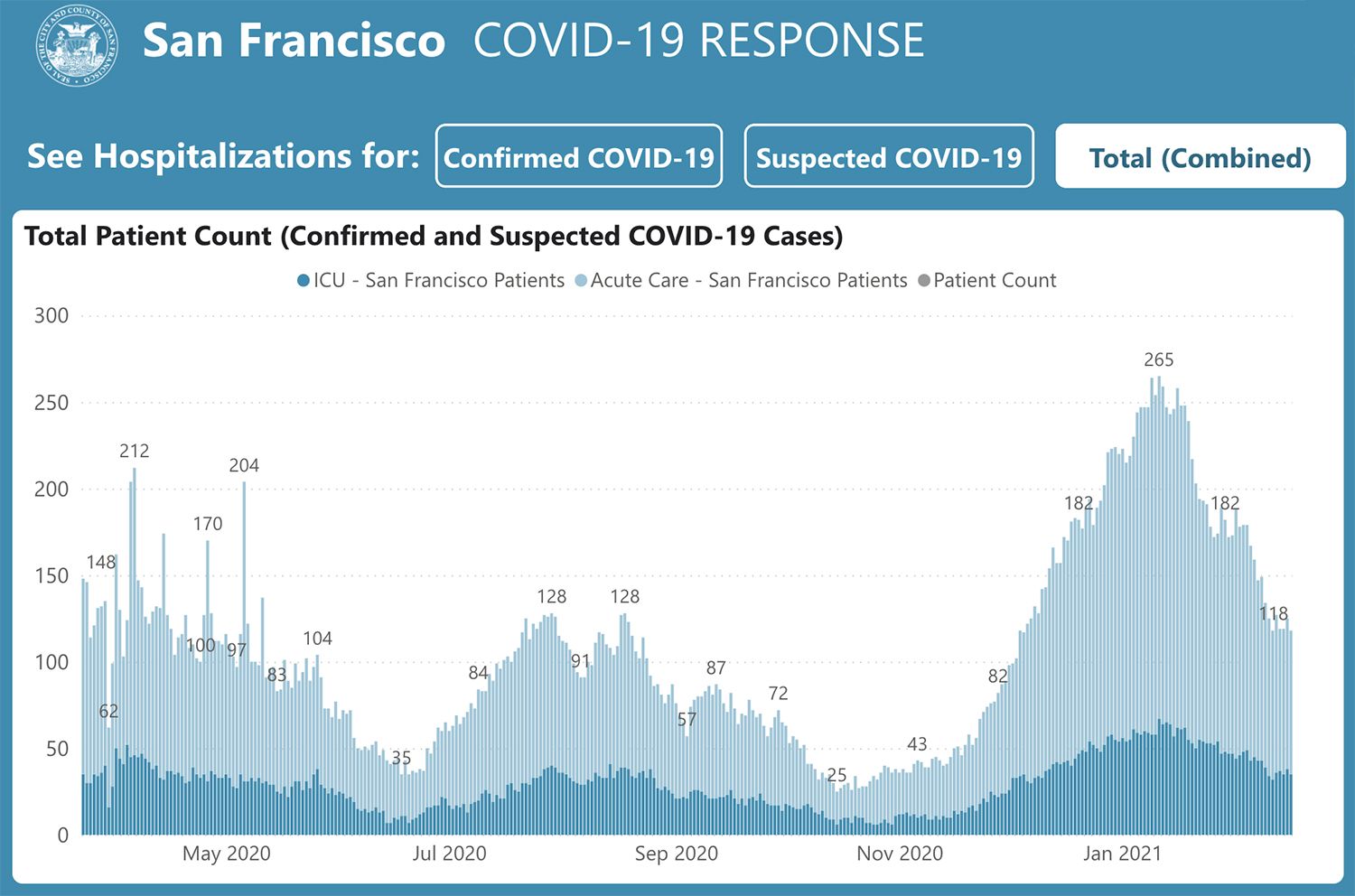California at large and the Bay Area were entirely in sync with the wave of new COVID cases and uptick in hospitalizations that began around Thanksgiving. And on the same day that California's number of hospitalized COVID patients fell back to late-November levels this week, the Bay Area's number has also fallen to nearly the same number as on November 30.
The total number of severe COVID cases in the Bay Area requiring hospitalization crested above 1,000 on December 1, and proceeded to rise to a peak of 2,369 on January 7. The number has fallen back below 1,000, to 969, as of Wednesday, February 17, and it has been trending steadily downward for over one month.*
The same trend can be seen in hospitalizations across California, with numbers cresting above 8,000 on November 29, and then finally dipping back below 8,000 as of Wednesday. The peak day of hospitalizations for the state was January 6, when 21,936 COVID patients were in California hospitals. With the total as of Wednesday being 7,904, the hospital census statewide has dropped by two thirds in the span of six weeks.

In San Francisco, hospitalizations peaked at 265 on January 11, and have fallen off by more than half since, hitting 118 as of Tuesday. The January peak was more than double the previous peak during the summer surge, and with 118 people in city hospitals, we are still close to the levels seen during that peak in August.

This is good news, of course, but just looking at the Bay Area numbers, 969 people in hospitals is still a lot of sick people, and nearly four times more sick people than the low numbers of mid-May to mid-June, after the initial strict lockdowns across the region. And deaths continue to be recorded in high numbers in Bay Area counties, crossing the 5,000 mark this week and dozens being added every day.
The downward trend is at least indicative of lowering infections rates overall. While case counts can be misleading if people have become complacent about getting tested, the coronavirus has shown us that some percentage of people inevitably requires hospitalization, and the hospital numbers don't lie.
We clearly are not out of the woods, and vaccine availability is likely to remain an issue for the next several months. And then there is the issue of variants that could be either more contagious or more deadly, or both, and could end up impacting the vaccinated down the road.
Speaking about a hospitalization trend chart that Bay Area News Group published today, professor emeritus of infectious disease and vaccinology with the UC Berkeley-UCSF Joint Medical Program Dr. John Swartzberg says "the biggest smile came over my face."
But, he cautions, "If we didn’t have the variants and we really stayed vigilant about masking and social distancing, I think the numbers would continue to precipitously drop." He's concerned that people will become complacent too soon, and start taking masks off and gathering in groups as the weather improves.
"Find the fortitude to keep masking and social distance,” Swartzberg says, by way of advice to all Californians. "Double down on that… and we will really have a good handle on the pandemic."
Related: Bay Area Coronavirus Information — Updated Daily
Photo by Mario Tama/Getty Images
*This post has been updated to show that there were 969 COVID patients in Bay Area hospitals as of 2/17, after San Francisco updated its numbers for Wednesday.

